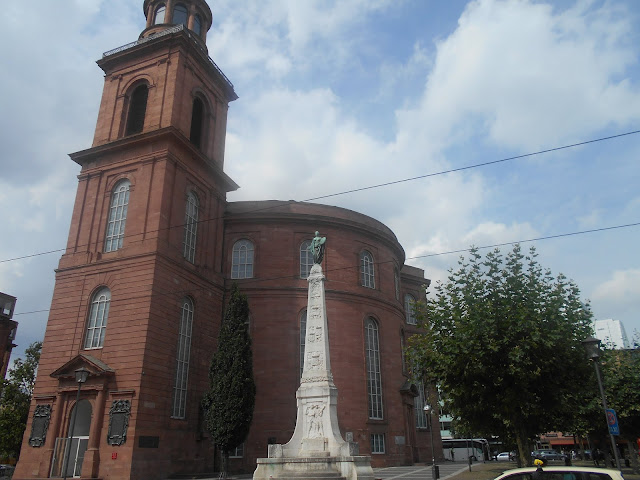 |
| The Baptist Home School. Image from Filamer Christian University / Milton Walter Meyer. |
One day in August 1904, a local constabulary commandant
informed Mrs. Robbins about the case of orphaned three children—one girl and
two boys. Their father, a bandit chief, was sentenced to life imprisonment and
they had no mother to look after them. The Robbins, who already had seven orphan
children under their ward, adopted the girl named Regina. The two boys were
sent to good homes nearby. Little did the Robbins know that their noble act of
giving home to a young girl would later have a significant impact to the lives
of many people in Capiz.
Barely a month earlier, the Robbins arrived in Capiz, after
a stint in Iloilo. Two years ago, the Baptist faith was introduced to the
natives of Capiz when Swedish missionary, Eric Lund, arrived together with
Braulio Manikan, a Capisnon from the Aklan part of the province. With the help
of a wealthy gentleman, Don Manuel Gregorio, the Baptist
missionaries slowly spread their faith, despite the taunts and threats from the
clergy.
American history professor Milton Meyer, whose parents Dr.
and Mrs. Frederick Meyer were affiliated with Capiz Emmanuel Hospital from 1919
until 1943 and who were among the unfortunate victims of the Japanese at
Hopevale in Tapaz town, Capiz, credited the “accidental but fortuitous founding”
of the Home School to Reverend Joseph Robbins, who was described as a “very
extraordinary person.” His wife, “a quiet and gentle soul,” who filled their
home with “cheer and comfort.” Quoting Joseph Robbins, Meyer wrote that the
situation had touched their hearts “ for the homeless, neglected children in
the district and so established the Capiz Home School.”
In his report to the Baptist Mission Board , Rev. Robbins
took pride of the opening of the home school.
“In spite of unforeseen difficulties and the outspoken and continuous
opposition from the priests of Capiz and vicinity,” he wrote, “this school has
grown beyond our fondest hopes.” The home
school was, after all, one of the “best investments” made by the Baptists in
Capiz.
In the book Filamer through the Years: A Centennial
History of Filamer Christian College 1904-2002 by Nestor D. Bunda and Winnifred
D. Stanford, Celia Sainz is also given credit for founding the Home School. Previously stationed in Barcelona, Sainz
arrived in Capiz in 1903, a year before the Robbins came, to teach Bible lessons
to women. Bunda and Stanford wrote:
“It was Miss Sainz who opened a school in her home for
Regina and other needy children. The girls being trained to become Bible Women
assisted her in teaching the orphans and the poor children to read in their own
language , to study the Bible and learn simple livelihood skills. It was not
the original plan to build a large educational institution, but simply to care
for “poor homeless waifs.’”
In 1905, the Robbins had to leave Capiz shortly after the
orphanage was opened, while Sainz moved to Pontevedra. In 1906, due to health
problems, she returned home. The task of running the Home School fell into the
lap of Margaret Suman, who arrived in Capiz from Congo in 1905.
By now home to 30 girls, Joseph Robbins wanted the school to
accept more girls “between ages six and twelve years, who live in distant
barrios where there is no school, bring them here and furnish them with a home
and home care and Christian training, sending them to public school, and give
them industrial training during the long summer vacation.”
The Home School was located in a rented large bamboo house. The
number of girls living at the Home School swelled to fifty-three in 1905, Dr.
Raphael Thomas reported to the mission board the need “for a large permanent
home.” In 1906, the Robbins returned from the United States with a donation
from Mrs. John D. Rockefeller, to purchase a land. According to Milton Meyer,
the Baptists acquired “a hilly
bamboo-studded track of seven acres, located a mile south of the town’s center”
and adjacent to the main highway. The land cost $231.41.
Another interesting thing about the property was the view it
behold! “Immediately lay beneath us lay the town of Capiz,” Peter Lerrigo
wrote. “Its defects were not prominent at this distance and it presented us a
lovely view.” Built on this property were the Home School, hospital, mission
house, and the doctor’s residence. By the end of 1907, the Home School had a
new building. All these efforts by the American Baptists resulted to the
expansion of the Home School but also of the spread of the Baptist faith in
Capiz. The Capiz Home School is now Filamer Christian University.
References:
Nestor Bunda and Winnifred Stanford (2004). Filamer through the Years: A Centennial History of Filamer Christian College 1904-2002. Filamer Christian College, Philippines; Milton Walter Meyer (2003). Letters Home: The Meyers & Capiz 1919-1943. The Paige Press, Claremont, CA; Missions in the Philippines (1906-1911). Boston, Mass.: American Baptist Missionary Union.
















